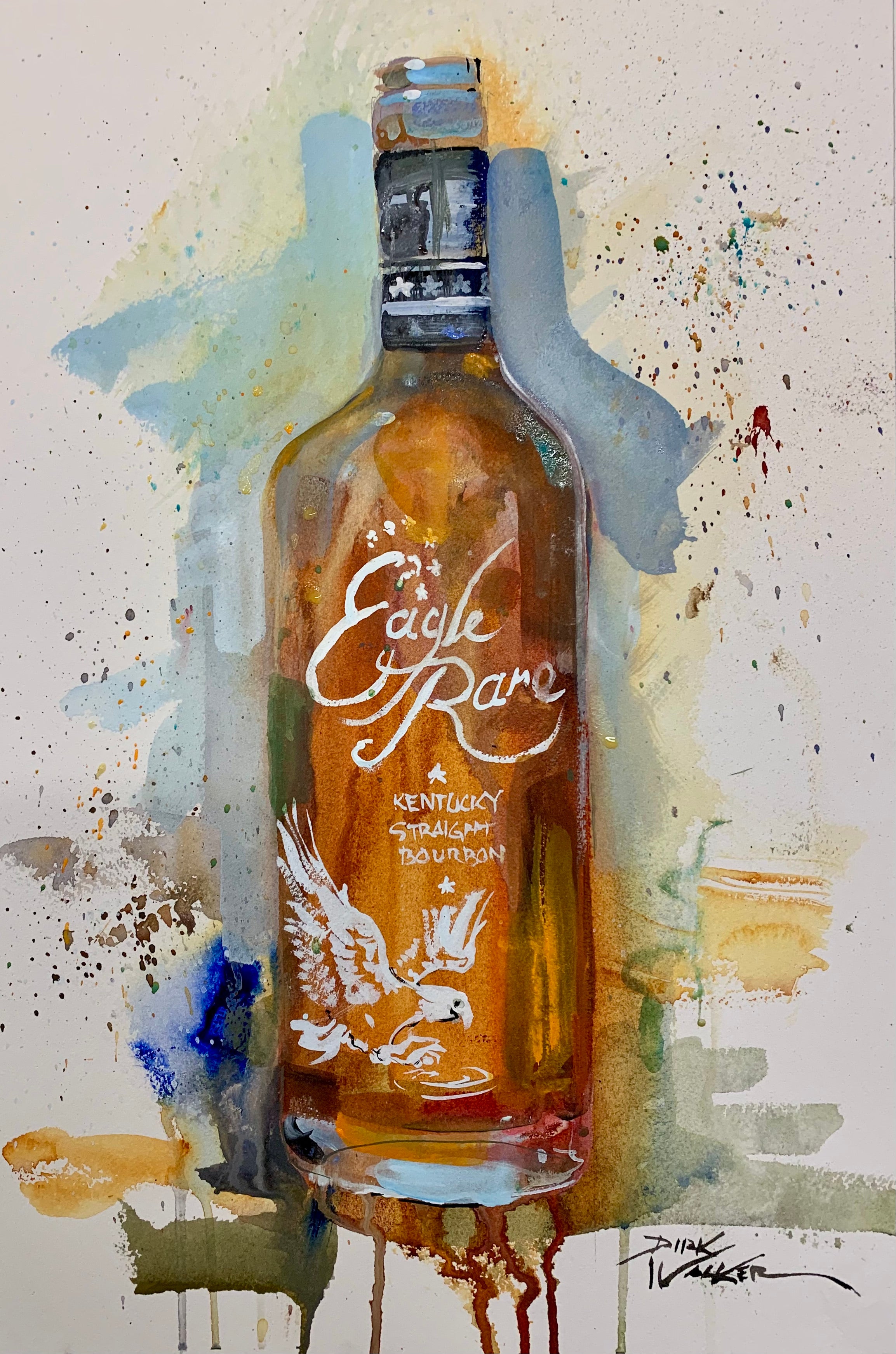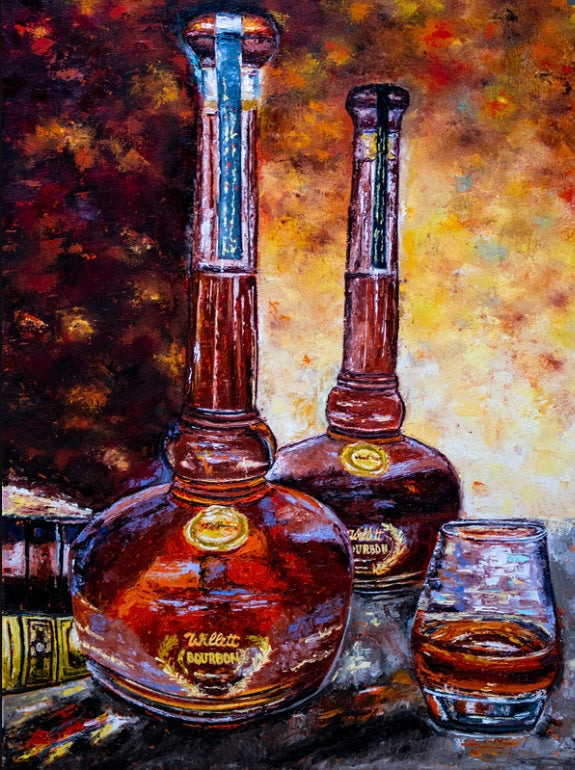Realism Art in the Whiskey Market: Depicting Moments of Purification
Realism Art in the Whiskey Market: Depicting Moments of Purification
Blog Article
The Relevance of Whiskey Art in Celebrating Heritage and Workmanship in the Beverage Industry
The complex partnership between scotch art and the event of heritage and workmanship within the beverage market can not be overstated. With thoughtfully designed bottles and tags, whiskey brand names encapsulate their historical origins and the artisanal skills that specify their manufacturing approaches.
The Historical Origins of Whiskey
At the heart of scotch's allure exists an abundant tapestry of historic roots that map back to old people. The beginnings of bourbon can be connected to the purification techniques of the Sumerians and Babylonians around 2000 BCE, where very early kinds of fermented grain drinks began to emerge. Nonetheless, it was in the Middle Ages that the art of distillation progressed considerably, particularly in Ireland and Scotland, leading to the creation of scotch as we understand it today.
The term "bourbon" itself stems from the Gaelic word "uisce beatha," implying "water of life." This expression highlights the social significance of whiskey in Celtic societies, where it was often connected with routines, celebrations, and common bonding. By the 15th century, distillation became a recognized craft within monastic areas, leading the way for the establishment of legal distilleries.
As profession courses increased, bourbon's appeal grew, going beyond regional borders and catching the passion of connoisseurs worldwide. Whiskey Art. This historic trip mirrors not only the workmanship behind bourbon manufacturing yet additionally its indispensable function in social and social contexts, noting it as a significant drink throughout background
Artistic Expression in Branding
Scotch branding stands as a compelling intersection of virtuosity and business, where aesthetic identification plays a crucial duty in forming consumer perception. The visual appeals of whiskey tags, packaging, and marketing products reflect not only the brand's story but additionally its core worths and heritage. Through artistic expression, distilleries share a story that resonates with consumers, stimulating emotions and stimulating connections.
Making use of color, typography, and images in branding offers to set apart items in a saturated market. Standard themes may stimulate a sense of authenticity and craftsmanship, while modern-day styles can signify technology and forward-thinking. This critical creative direction boosts brand name acknowledgment and commitment, allowing customers to create a personal relationship with the scotch they pick.
In addition, imaginative expression in branding frequently works as an event of local heritage. Distilleries regularly integrate local signs or historic references right into their layouts, producing a feeling of area that welcomes customers to engage in a wider social experience. Eventually, the artistry behind whiskey branding not just improves visual charm but likewise improves the total narrative of the brand, cultivating a deeper appreciation for the craftsmanship and heritage ingrained in each container.
Craftsmanship in Bottle Design
The artistry obvious in scotch branding prolongs past visual identity to incorporate the workmanship associated with container style. Each bottle acts as a vessel not just for the spirit within, however additionally for the tale it tells about its beginning, quality, and practice. The layout process needs precise interest to information, as elements such as material, closure, and shape add considerably to the total understanding of the bourbon.
Workmanship in bottle design involves picking high-quality glass that can improve the whiskey's shade and quality, while likewise offering a tactile experience for the consumer. The shape of the container should be both aesthetically enticing and useful, commonly reflecting the heritage of the brand. Several distilleries opt for one-of-a-kind shapes or embossed logos that evoke a feeling of authenticity and history.
Additionally, the tag design and typography play an important function in connecting the brand's narrative. Realism Art. A well-crafted bottle not only astounds the customer's eye however also enhances the brand's dedication to high quality and practice. In this method, the craftsmanship of bottle design becomes an essential element of the scotch experience, combining artistry with a profound regard for heritage
Social Importance of Scotch Art
Celebrating custom and craftsmanship, the cultural importance of scotch art goes beyond plain aesthetic appeals, intertwining with the social and historic stories of the regions from which it stems. Each container offers as a canvas, showing the distinct stories, mythology, and practices that have formed neighborhood whiskey-making methods. The detailed designs frequently reflect the heritage of the distillers, incorporating signs and concepts that reverberate with the society and worths of their communities.

In addition, scotch art plays an essential duty in public gatherings and parties, functioning as a substantial link in between people and their shared experiences. By appreciating the creativity in bourbon packaging, customers grow a deeper understanding and regard for the craft, inevitably enhancing their enjoyment of the beverage my blog itself.
Modern Trends in Whiskey Presentation
In recent times, the discussion of bourbon has actually developed to mirror contemporary tastes and trends while still recognizing conventional craftsmanship - Limited Edition. Distilleries are increasingly concentrating on aesthetic elements that improve the total alcohol consumption experience, connecting the gap in between heritage and modernity
Innovative bottle layouts have actually arised, typically integrating lasting products and creative labels that inform engaging tales. Numerous brands now team up with neighborhood musicians, instilling their items with distinct visual expressions that resonate with consumers. In addition, limited-edition releases are usually packaged in collectible containers, adding value and allure for aficionados.

Conclusion
To conclude, whiskey art works as an essential avenue for expressing the heritage and craftsmanship inherent in the drink industry. Through detailed branding, ingenious bottle designs, and culturally considerable creative aspects, scotch brands effectively recognize their practices and connect with customers. This imaginative story not just elevates the recognition of whiskey but likewise enhances community identification and pride among manufacturers. Ultimately, bourbon art plays a necessary role in preserving and commemorating the abundant cultural tapestry of whiskey-making.


Craftsmanship in bottle layout entails selecting high-quality glass that can boost the scotch's shade and clearness, while additionally offering a responsive experience for the consumer. In this method, the workmanship of bottle style additional info becomes a crucial element of the whiskey experience, merging virtuosity with a profound regard for heritage.
In conclusion, bourbon art offers as a vital avenue for sharing the heritage and workmanship fundamental in the drink sector.
Report this page